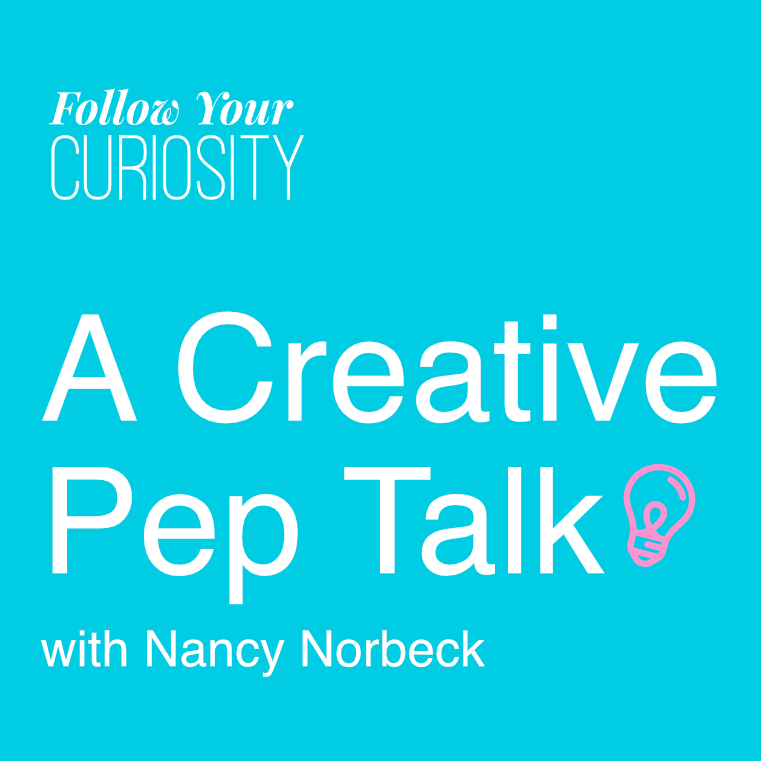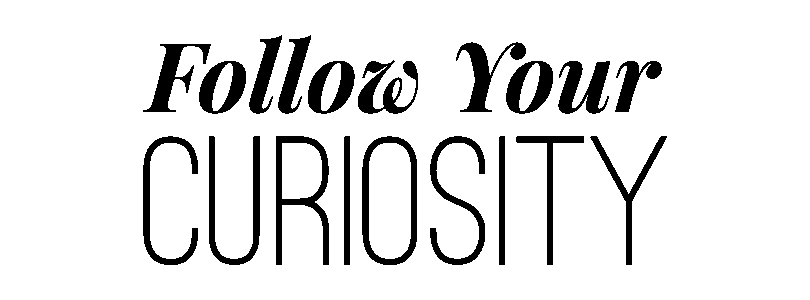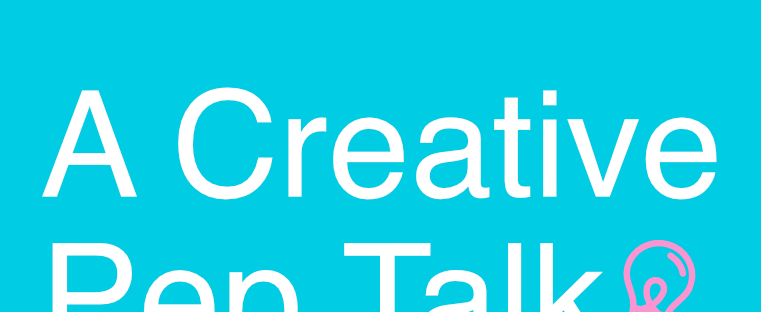
Is multitasking real? Possible? It depends on your definition, but I’d rather talk about how the attempt affects us—why we feel so pushed to do it, and what’s the price we pay? I’m sharing my thoughts in this short episode.
If watching your kids build a pillow fort makes you wonder where the heck that zany, wild, playful part of yourself went…we should talk.
Want more tips? Check out this playlist with all my previous Creative Pep Talks!
Could you leave a review? It’s really easy, and it helps SO much. Thanks!
Join my free creative community, The Spark! We celebrate each other’s creative courage, and I’ll be sharing programs for subscribers and listeners there in the coming months.
Get in Touch
I’d love to hear your feedback, questions, and experience with these ideas! Send me a note at fycuriosity.com, or contact me on Instagram, or Bluesky.
Subscribe!
You can subscribe to Follow Your Curiosity via the handy links at the top of the page for Apple Podcasts, Spotify, iHeart Radio, TuneIn, and YouTube. If you enjoyed the episode, don’t forget to tell your friends!

Transcript: The Myth of Multitasking
Please note: This is an unedited transcript, provided as a courtesy, and reflects the actual conversation as closely as possible. Please forgive any typographical or grammatical errors.
Nancy Norbeck [00:00:06]:
Welcome to follow your curiosity, ordinary people, extraordinary creativity. Here’s how to get unstuck. I’m your host creativity coach, Nancy Norbeck. Let’s go. You remember when multitasking was new? About thirty years ago when Windows came out and you could have more than one thing running at the same time and woah, what an awesome thing that was. I remember that really well. I’m Nancy Norbeck with this create with I’m Nancy Norbeck with this week’s Creative Pep Talk. And here’s the thing.
Nancy Norbeck [00:00:38]:
I don’t think any of us could have predicted thirty years ago the effect of multitasking. Most of us were quite content being, as Alton Brown would say, unitaskers, doing one thing at a time. Maybe we got a little bit impatient waiting for something to finish running its course or whatever, but for the most part, I don’t think that anybody was really, really itching to be trying to do 30 things at the same time. Raise your hand if you recognize that one, because I think that’s probably most of us. Here in 2025, we live with this illusion that we should all be doing 18 things at the same time with, you know, multiple sets of arms and legs to somehow make that happen. But the truth is brain science tells us that multitasking is a myth. As much as many of us want to tell ourselves that we can actually accomplish two things at once, we just can’t, at least not well. And and really, I think that’s an illusion that we actually can do more than one thing at a time.
Nancy Norbeck [00:01:43]:
Your brain can only focus on one thing at a time. Now if you’re switching back and forth every couple seconds, it may feel to you like you’re doing multiple things at the same time, but I don’t think that’s the truth of it. And honestly, from a perspective of 2025 versus, say, the early nineties, I feel like multitasking is just another way to try to get more and more labor from the same exhausted person without any extra compensation, acknowledgement, rest time, anything like that. Because if you’re trying to do 18 things at the same time, you are going to need to rest. The thing is this belief in multitasking has become so normalized over the last thirty years that even creative folks seem to think that we should be able to do multiple things at the same time. And we just can’t. We may have multiple projects that we’re working on at any given moment, But that’s, you know, this painting today, that painting tomorrow, working on getting them ready to go into the gallery the day after that. It’s it should not be I mean, you don’t know any painters who are really painting with both hands doing two different paintings at the same time.
Nancy Norbeck [00:03:00]:
Right? I mean, even that image as I dream it up sounds ridiculous right on its face. Because it doesn’t make any sense. If you are devoting your attention to a creative thing, you wanna be devoting your attention to that thing and not trying to figure out five other things at the same time. Now that doesn’t mean that while you’re painting, you may, somewhere in the back of your head, be contemplating your grocery list, but you’re still primarily focusing on that painting and probably only distracting yourself in moments when you can kind of go on autopilot. My point with all of this is that multitasking is a myth and it’s one that we hold ourselves to, to our detriment. If you are the kind of person who chronically tries to do too many things, and honestly, I suspect that’s most of us at this point, I really want to encourage you to give yourself permission, because at this point, I think we need it, to focus on one. Focus on one thing you really want to pay attention to and do it really well. Now, the catch is that because we have been so trained to scatter our attention everywhere, which brings up my perpetual question, is it really ADHD or is it that our attention spans have been destroyed? And I don’t know that we will ever know the answer and it probably doesn’t matter because the symptoms are the same.
Nancy Norbeck [00:04:30]:
It may be really, really hard to say I’m going to just work on this thing for this period of time. And part of the reason that I think that’s true is the multitasking I strongly suspect has become a way for us to totally dissociate from everything else that’s going on in our lives. If we are that busy, we do not have to sit down and actually feel what we feel. And the thought of having to do that may be deeply uncomfortable. It could be that the first time you sit down to try to work on just one thing, you last thirty seconds. It wouldn’t surprise me if that’s most people. But the more we do it, the more determined we are to retrain our focus, the easier I think it’s gonna get over time and the happier I think we will be. Because I don’t think we realize how much this illusion of too much busyness has eaten away at our happiness, our souls, our relationships, the whole thing.
Nancy Norbeck [00:05:42]:
So this is my plea and my permission for you to actually take a break and pick one thing that you want to focus on and give yourself permission not to worry about anything else for that time. Start with five minutes and see if that’s enough and if it’s too much. And you can always adjust the amount of time and keep adjusting it. But I have a feeling that your whole soul and probably your body too is gonna breathe a huge sigh of relief when you try it. The more you do it, the better it’s gonna feel. And remember, this is the way we all used to be back before technology made all of these multiplicities possible. So I hope you’ll give that a try. I have a follow-up coming up next time that I think you’ll be interested in, and good luck to you whatever you end up doing.
Nancy Norbeck [00:06:35]:
See you next time. If this episode resonated with you, or if you’re feeling a little bit less than confident in your creative process right now, join me at the spark on Substack as we form a community that supports and celebrates each other’s creative courage. It’s free, and it’s also where I’ll be adding programs for subscribers and listeners. The link is in your podcast app, so sign up today. See you there, and see you next week. Follow Your Curiosity is produced by me, Nancy Norbeck, with music by Joseph McDade. If you like Follow Your Curiosity, please subscribe, rate, and review on Apple Podcasts or wherever you get your podcasts. And don’t forget to tell your friends.
Nancy Norbeck [00:07:14]:
It really helps me reach new listeners. Norbeck [00:00:06]:
Welcome to Follow Your Curiosity. Ordinary people, extraordinary creativity. Here’s how to get unstuck. I’m your host, creativity coach, Nancy Norbeck. Let’s go. Hey listeners. This is Nancy Norbeck and we’re here for this week’s Creative Pep Talk. But first, I want to make sure that you know that my anti perfectionism course, Make Bad Art is coming back starting October 14. I would love to see you there because most of us have at least a little bit of perfectionism these days.
Nancy Norbeck [00:00:38]:
It doesn’t have to look like an obsession with getting everything right. It can look like wanting all of the things that you need to be correct before you get started. It can look like not starting at all because you don’t think that you will do a good enough job. It can also just look like a heck of a lot of self judgment. You know, those nasty voices in your head. So if you are really tired of your inner critic running amok in your head and you are ready to confine it to quarters, Make Bad Art is the course for you. And if you sign up at the link that is in the show notes or below this video and use the code PODCAST, all in caps, you’ll get a $100 off. I hope to see you there.
Nancy Norbeck [00:01:18]:
If you have any questions at all, get in touch and I will do my best to answer and give you an honest answer on whether or not this course is right for you. So with that, here’s our podcast. Remember when you were a little kid and you sat in somebody’s car, possibly on somebody’s lap, depending on how big you were and sat in a parking lot or a driveway playing with the steering wheel. I’m driving to California. I’m driving to New York. Maybe if you were especially ambitious, I’m driving to Australia. Anything like that. You remember how that was, that person that you were with was a trusted adult and they let you sit there and play with the car because they knew you couldn’t reach the gas and they knew the car was properly parked and the ignition was not on.
Nancy Norbeck [00:02:10]:
I think almost every kid has done this in some way, shape or form, even if it’s just pretending that they’re in a car. Here’s the thing you ever notice? How far did you get in that car? You didn’t get very far. And the reason for that on top of the fact that you were a small child is that you cannot steer a parked car. You can’t steer a car that has no ignition, where you can’t reach the gas pedal, and that’s in park. It doesn’t work. That’s one of my friends, Sandy Parker Martinez’s favorite sayings. And she’s so correct. You can’t steer a parked car.
Nancy Norbeck [00:02:50]:
You can’t go anywhere that way. But a lot of us love to get in the car like we’re little kids and pretend that we are doing things to make progress. But we don’t have any gas. We don’t have any ignition. And we don’t really have the confidence to steer that car when it’s not in park. Now, the key to this is not only to have those three things, but also, you know, taking action can be hard. It can be really rough when you haven’t done it for a while or when it’s your first time with a big project. And a lot of the time we think that we have to do it all at once.
Nancy Norbeck [00:03:37]:
We have to take this enormous step out. You know, we have to do all of the things all the time. What happens in your brain when you think that way is that you completely freak yourself out, which turns off the ignition, makes sure you can’t reach the gas and, you know, leaves you in park forever. So I want to encourage you today to take some kind of small action in whatever way it is that feels doable to you. Not that feels enormous. Not that feels like I’m going to be super ambitious and do everything. No, no, something small, something you can do in just a couple of minutes. Cause here’s the thing, shorter rungs on the ladder, smaller steps, get us farther faster than trying to take that giant leap.
Nancy Norbeck [00:04:34]:
They always have, they always will because it’s easier to feel the progress or to put it in more of a modern parlance. You get a little dopamine rush for every small step you take. And so you want to keep doing them. Whereas that big step is scary and intimidating and probably more than you can chew at one time. So I would encourage you to find a small step and do it. If you’re really clever, you could map out two or three, but only plan to do one of them at a time. Two and three will, will happen on their own. The only reason that I suggest that you plan them out is if you’re the kind of person who’s gonna get to the end of that first step and go now what? Right.
Nancy Norbeck [00:05:20]:
But probably if you have a big thing that you wanna work on, you, you know what those steps are. So take the chance on a tiny step as counterintuitive as it sounds. And I can pretty much guarantee you you’re gonna get a whole lot further because that tiny step will be enough to get your foot on the gas, to turn on the ignition and to take the car out of park. Not necessarily in that order, but you get what I’m saying. It’s enough to start the process. And as the cliche goes, once the ball starts rolling, it’s harder to stop it. So what’s the smallest step you’re going to take today this week. What’s that tiny step.
Nancy Norbeck [00:06:03]:
What would make you feel better? Feel like you got started and get that ball and that car in motion. Give it a try. Let me know how it goes. And I really hope that I’ll see you and make bad art. If this episode resonated with you, or if you’re feeling a little bit less than confident in your creative process right now, join me at the spark on Substack as we form a community that supports and celebrates each other’s creative courage. It’s free, and it’s also where I’ll be adding programs for subscribers and listeners. The link is in your podcast app, so sign up today. See you there, and see you next week.
Nancy Norbeck [00:06:42]:
Follow Your Curiosity is produced by me, Nancy Norbeck, with music by Joseph McDade. If you like Follow Your Curiosity, please subscribe, rate, and review on Apple Podcasts or wherever you get your podcasts. And don’t forget to tell your friends. It really helps me reach new listeners.

